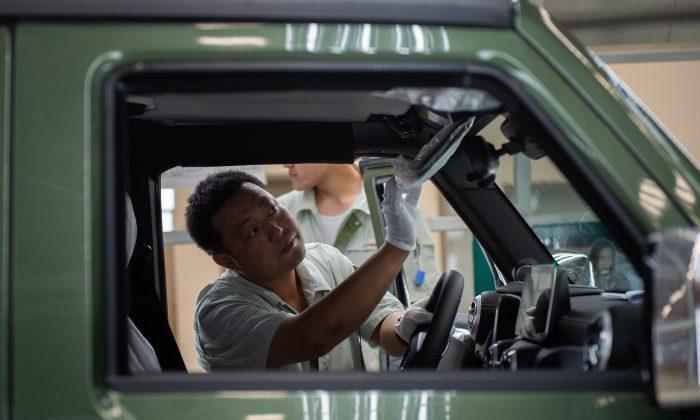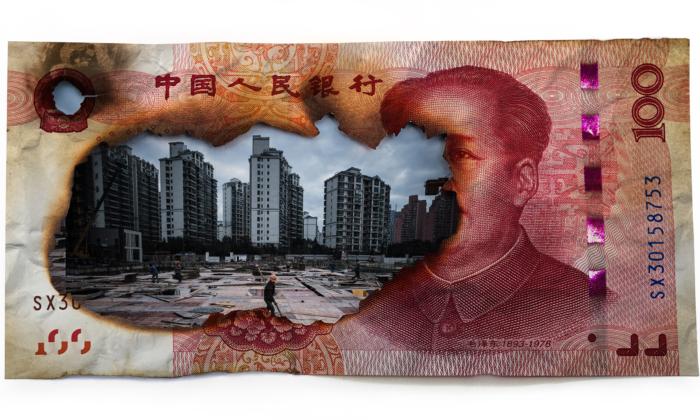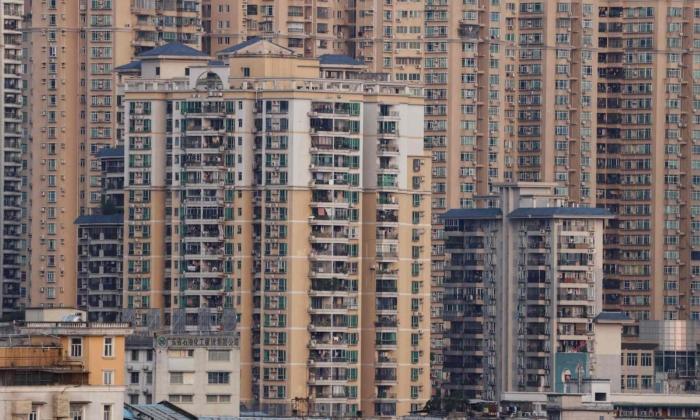China’s fixed-asset investments decelerated further in August, to the slowest growth rate since official records were kept, as the country braces for the introduction of additional tariffs from President Donald Trump.
Fixed-asset investment—which measures spending on homes, factories, infrastructure, and other fixed assets—grew at the slowest rate on record in August, as Chinese economic growth continues to decline due to the tangible effects on business sentiment of U.S. tariffs.
The data comes at a critical time, testing the nerves of Beijing policymakers as Trump readies another round of tariffs on Chinese exports.
China’s National Bureau of Statistics reported Sept. 14 that fixed-asset investment growth for the first eight months of 2018 rose just 5.3 percent, the weakest reading since at least 1995, according to the Financial Times, and the slowest growth rate since official records were kept.
Infrastructure spending, which measures government investments into roads, railroads, and other public projects, eased to a 4.2 percent gain. Private-sector fixed-asset investment was better, at 8.7 percent, but also below the prior month’s reading.
Stimulus Measures
The investment data comes after Beijing announced over the summer a series of stimulus measures to revive the economy, after disappointing official second-quarter GDP growth. Infrastructure investments, especially in rural and Western China, were a key feature of announced stimulus measures. However, any jump in new projects didn’t appear to have been reflected in the August numbers.In addition, it is worrisome that weak investment metrics came about despite that the impact from the U.S. trade war is not yet reflected in any official economic readings.
An Economy Tottering
“The Chinese economy overall is still slowing,” Lu Ting, chief China economist at Nomura International Ltd. in Hong Kong, told Bloomberg News.“The slowdown could get worse in the next couple of months. We expect an escalation of U.S.–China trade tensions and the fallout of some emerging market economies to weigh on China’s export growth.”
Chinese Communist Party officials are under tremendous pressure. China’s sputtering economy gives Beijing a weak hand to play ahead of key new trade talks between China and the United States.
Trump is reportedly planning to press ahead with another $200 billion of tariffs on China. He wrote on Sept. 13 that “our markets are surging, theirs are collapsing.”
With a 20 percent year-to-date drop, the Shanghai Composite Index—China’s benchmark stock index—is among the worst-performing in the world. The technology-heavy Shenzhen Composite Index has been even worse, with a 27.4 percent decline since Jan. 1.
The U.S. S&P 500 Index is up almost 8 percent in 2018, with the technology-heavy Nasdaq Composite up about 15 percent. Both are among the best-performing markets in the world in 2018.
Half a year into a broadening trade spat, and its effects have dropped China’s stock market into the same league as other stressed emerging markets such as Turkey and Argentina, which are suffering for other reasons.
Beijing still has some options, including ramping up stimulus efforts and boosting lending. But further expansion of debt would be antithetical to Beijing’s stated goal of deleveraging.
China could stay the course with “defensive easing efforts, which include a boost to banks’ on-balance-sheet lending, faster local government bond issuance and project approvals, and more flexibility in shadow bank tightening,” Morgan Stanley analysts wrote in a note on Sept. 14.
“Should the U.S. impose a 25 percent tariff on its proposed list of an additional $200 billion worth of Chinese goods, we would expect policymakers to adopt more fiscal and monetary measures, with tax cuts and a stronger rebound in broad credit growth.”






Friends Read Free